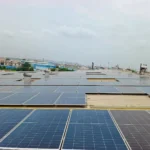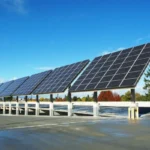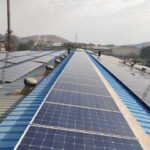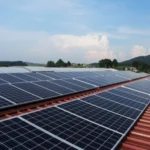Solar Industry Faces Growing Losses from Underperforming Equipment
Solar Industry Faces Growing Losses from Underperforming Equipment
According to the Raptor Maps’ Global Solar Report, the amount of power loss due to equipment anomalies has nearly doubled from 1.61% in 2019 to 3.13% in 2022. This trend is expected to continue, with anomaly-driven power loss potentially growing to almost 6% by 2025.
The report also found that for sites larger than 200 MW, average underperformance due to anomalies has more than tripled since 2019, resulting in an estimated annual revenue loss of $82M for the 24.5 GW of assets analyzed in 2022, translating to an average loss of $3,350 per MW. Extrapolating these findings to the total global installed PV capacity (excluding residential) as of the end of 2021, the report estimates that the industry is facing a $2.5B annual revenue loss.
Furthermore, the report revealed that polycrystalline modules are more likely to show module-level and submodule-level anomalies on inspection compared to thin film and monocrystalline modules. Asset owners are increasingly looking for more granular data, with 32% of Raptor Maps customers requesting IEC-compliant Comprehensive Inspections in 2022, up from 23% in 2021.
The report emphasizes the need for asset owners and managers to monitor equipment performance over time and proactively identify maintenance issues and warranty claim opportunities.
Overall, the Raptor Maps Global Solar Report emphasizes the importance of proactive monitoring and maintenance to ensure the long-term health and profitability of solar assets. With the use of innovative technologies solar stakeholders can take steps to address the growing issue of equipment anomalies and underperformance, and help solar installations flourish for decades to come.
In conclusion, the solar industry needs to take proactive steps to address the growing problem of underperformance due to equipment anomalies. Raptor Maps’ Global Solar Report provides valuable insights and benchmarks to help asset owners and managers monitor their solar assets’ health and identify issues before they become costly problems.
Suggested Articles

Solar Savings Made Simple: Know Your Cost Cuts in 2025
Maximize your solar savings in 2025. Learn how solar energy reduces electricity costs for homes and businesses.

Selecting Solar Panels: Best Guide for Homes and Factories
Solar panels are a hot topic these days, as the cost of solar is finally approaching what the average family can afford.

UP Electricity Tariff Increase 2015-16: Rates Rise by Rs 0.40–1.00 per Unit – What Consumers Need to Know
Uttar Pradesh has increased electricity tariffs for 2015-16, ranging from Rs 0.40 to 1.00 per unit. This update explains the revised rates, the sectors affected, and what consumers need to know about the tariff hike.

Delhi charges one of the highest tariffs for commercial load and industrial – average over Rs 10.00 per kWh
Delhi imposes some of the highest electricity tariffs for commercial and industrial consumers, averaging over ₹10 per kWh, impacting businesses and operating costs

Solar Projects Challenges in India: Module Supply Shortages and Policy Delays Slow Growth
India’s utility-scale solar projects face delays due to module supply shortages and policy challenges, impacting the growth of renewable energy.

End of Rooftop Solar Subsidy for Industrial & Commercial Consumers: What You Need to Know
The rooftop solar subsidy for industrial and commercial consumers is coming to an end. This guide explains the implications for businesses, updated policies, and strategies to adopt solar power without relying on subsidies.

पीएम सूर्य घर योजना 2025 – मुफ्त बिजली पाने के लिए ऐसे करें आवेदन
पीएम सूर्य घर योजना ऑनलाइन आवेदन 2025: मुफ्त बिजली पाने की आसान स्टेप-बाय-स्टेप प्रक्रिया यहाँ पढ़ें।

PM Surya Ghar Muft Bijli Yojana 2025: Online Registration Made Simple
PM Surya Ghar Muft Bijli Yojana 2025: Learn how to register online and get free electricity under this government scheme.